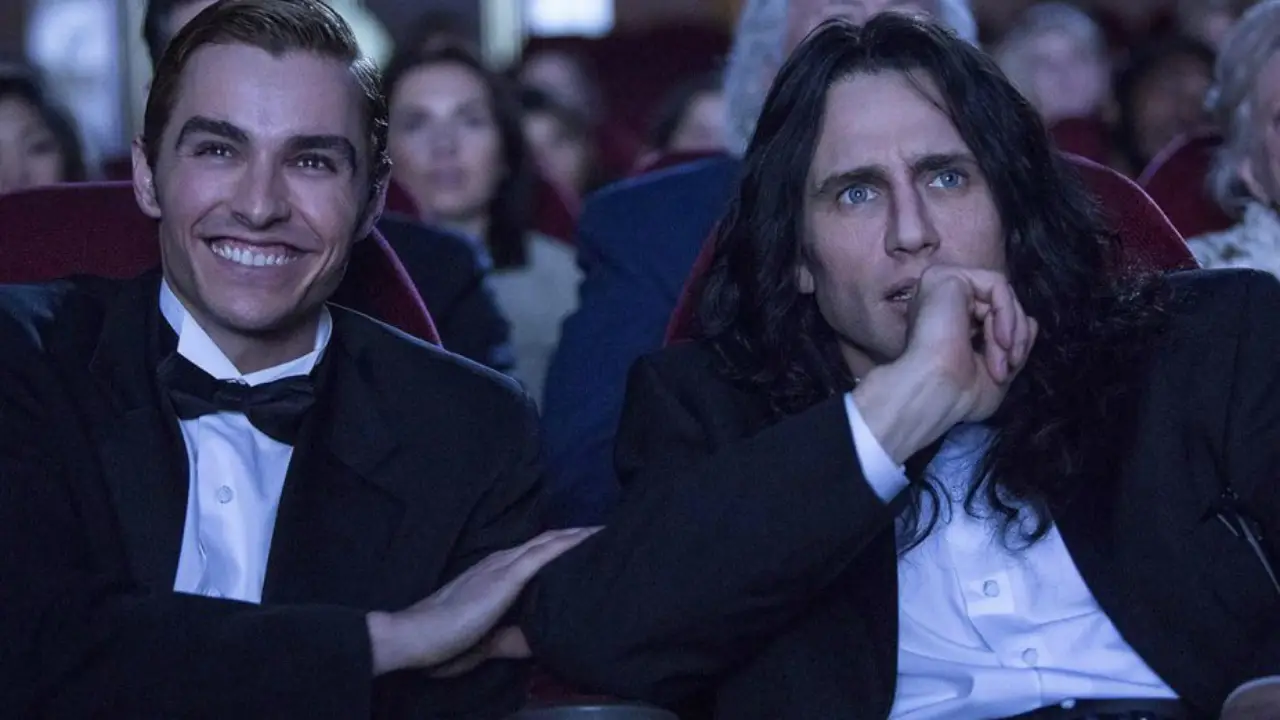There are mysterious people in the world. And then there is Tommy Wiseau.
We may never learn where he is from, how old he is or how he made his money, but now we at least have a small glimpse inside his world – or as he calls it, “Tommy’s Planet.”
The Disaster Artist, based on Greg Sestero and Tom Bissell’s book of the same name, shares the story behind the making of best bad movie of all time: Tommy Wiseau’s The Room.
Released in 2003, and garnering less than $2,000 in its opening weekend profits despite its estimated $6M budget, The Room is objectively horrible, but has gained a cult following due to its inexplicable foolishness. The Disaster Artist showcases the weirdness surrounding the creation and production of The Room, providing insight into why it is cherished by so many as “the Citizen Kane of bad movies.”
The film stars brothers James and Dave Franco as Tommy Wiseau and Greg Sestero respectively, while also featuring many other celebrities such a Zac Efron (Chris-R) and Josh Hutcherson (Denny).
The Disaster Artist begins in Wiseau and Sestero’s acting class in 1998. After a poor performance by Sestero and an eccentric scene from Wiseau, Sestero asks Wiseau if he would be interested in practicing with him. Wiseau agrees, and, being the enigma he is, brings Greg to lunch and they perform a scene together in full character in the middle of a restaurant.
This is simply the start of a wild friendship and viewing experience. As their friendship develops, they decide to take their acting careers to the next level and move to Los Angeles. When they cannot secure acting jobs in L.A., Wiseau decides to take matters into his own hands and writes a film for them both to star in: you guessed it, The Room.
The rest of the movie showcases the hectic creation of the film and all the classic Wiseau moments that come with it. We witness his ridiculous demands on set (including his own private “bathroom” – a toilet behind a curtain that only he is allowed to use), the ever-growing stress between him and the cast and crew and the general absurdity of Wiseau and Sestero’s friendship.
For some strange reason, The Room has fallen (devolved) into the categories of “cult classic,” and in some circles “cultural touchstone.” For those who have not seen this original film, The Disaster Artist can still be an enjoyable (though maybe confusing) commentary on friendship and the creative process, but for those who have held The Room near and dear to their hearts for any length of time, getting yourself to the nearest movie theater and fighting the opening weekend crowds for Star Wars is a necessity.
Though The Disaster Artist does not resolve many of the mysteries behind The Room or Tommy Wiseau himself, it certainly delivers in giving fans a better appreciation of Wiseau and how the film came to be. It is funny, intriguing and even a little heartwarming at points. Be sure to stay past the final “THE END” card though, so as not to miss the handful of iconic scenes from the original film shown side-by-side next to reenactments by The Disaster Artist’s cast.
One’s personal timeline will always be split into three eras: “Before The Room,” “After The Room, But Before The Disaster Artist,” and “After The Disaster Artist.” Everyone should try to join us on this side of The Disaster Artist as soon as possible.
While The Disaster Artist is just as ridiculous as The Room itself, there is enough substance to make it worth watching unironically.




